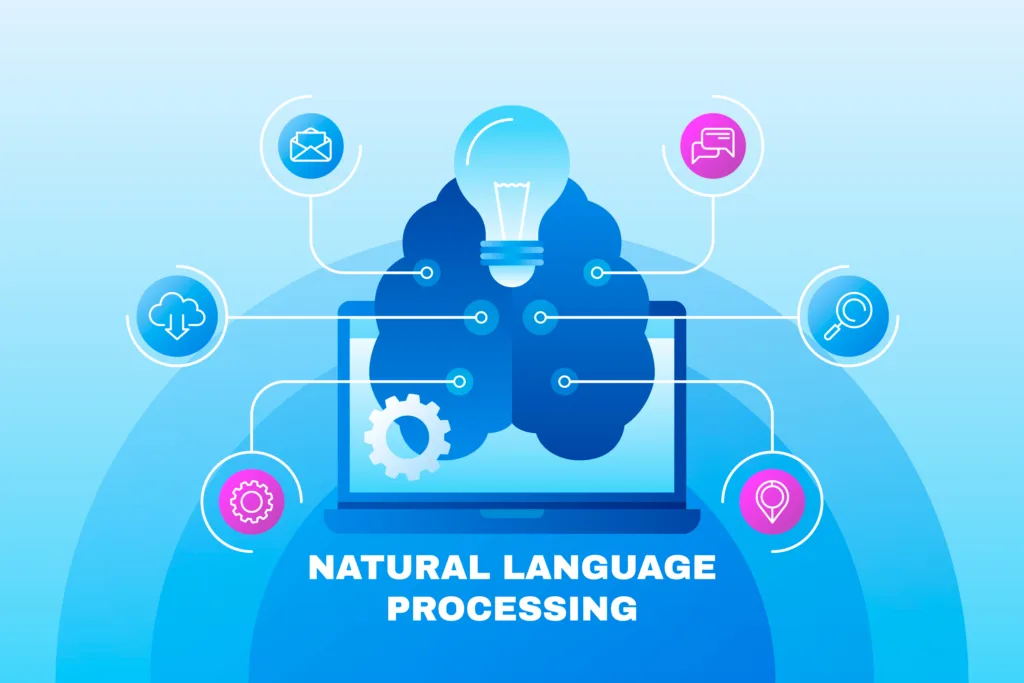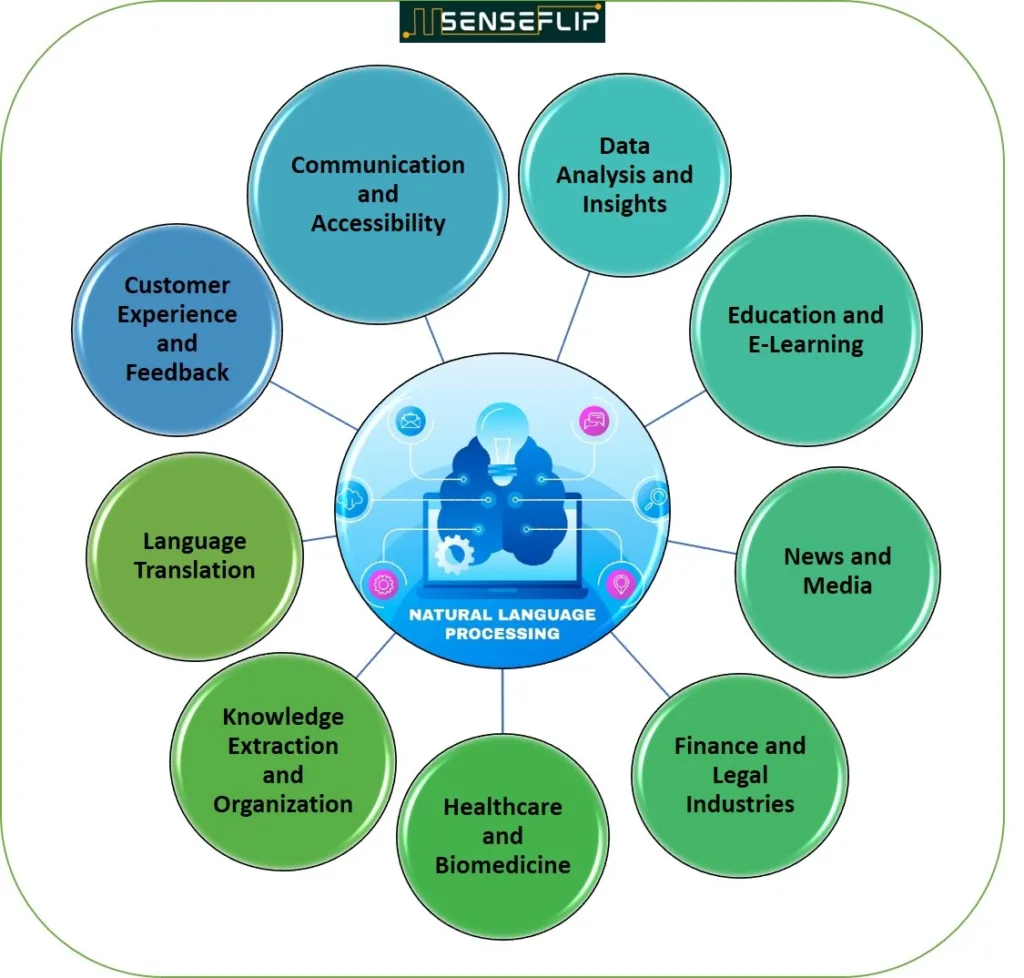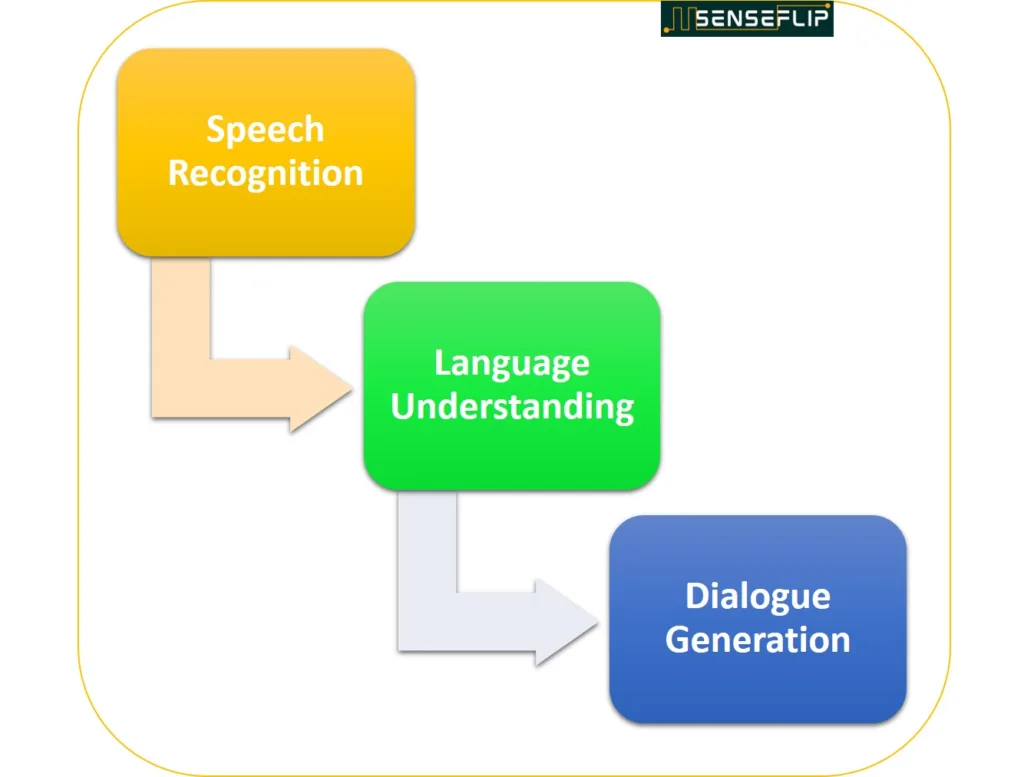
In today’s digitally-driven world, the field of Natural Language Processing (NLP) stands at the forefront of artificial intelligence, revolutionizing the way computers and humans communicate. By harnessing the potential of machine learning and deep learning techniques, Natural Language Processing enables machines to comprehend, interpret, and generate human language with remarkable accuracy and utility.
In this blog, we will delve into the amazing examples of Natural Language Processing NLP, exploring its importance and capabilities, and the transformative impact it has on various aspects of our lives.
At its core, Natural Language Processing (NLP) focuses on facilitating seamless interaction between computers and human language. Through the development of sophisticated algorithms and models, NLP enables machines to decipher patterns, extract meaning, and derive insights from vast amounts of textual data.
As our reliance on digital communication and human-computer interaction continues to grow, Natural Language Processing emerges as a vital bridge between the two realms. Virtual assistants like Siri, Alexa, and Google Assistant have become familiar household names, showcasing NLP’s ability to understand and respond to our queries.
Thanks to significant advancements in machine learning and deep learning, NLP models have reached new levels of sophistication. These models can now understand the context, nuances, and subtleties of human language, leading to improved accuracy and more natural interactions.
Cutting-edge research has fuelled the development of models like GPT-4, which demonstrate astonishing language generation capabilities, paving the way for exciting applications in content generation, personalized writing assistance, and language translation.
The Importance and Impact of NLP in Various Domains
The importance and impact of Natural Language Processing (NLP) are evident across various domains, reshaping the way we interact with technology and unlocking new possibilities. Here are some key highlights:

Communication and Accessibility:
NLP enables machines to understand and process human language, enhancing communication between humans and computers. This has led to the development of voice assistants, chatbots, and speech recognition systems, making technology more accessible and intuitive for a wide range of users.
Customer Experience and Feedback:
NLP plays a crucial role in analyzing customer sentiment and feedback. It enables businesses to gain valuable insights from social media, online reviews, and surveys, helping them understand customer preferences, improve products and services, and enhance customer satisfaction.
Language Translation:
NLP-based machine translation systems break down language barriers, facilitating global communication and fostering cultural exchange. These systems have become essential tools for international collaboration, business expansion, and accessing information from diverse language sources.
Knowledge Extraction and Organization:
NLP techniques are used for extracting and organizing information from vast amounts of text data. This enables efficient search and retrieval of relevant information, automates document classification, and supports knowledge management systems in various industries.
Healthcare and Biomedicine:
NLP is making significant strides in the healthcare domain. It assists in analyzing medical records, extracting relevant information, and supporting clinical decision-making. NLP-powered systems can help improve diagnosis accuracy, streamline healthcare workflows, and facilitate medical research.
Finance and Legal Industries:
NLP has transformed the finance and legal sectors by automating tasks such as contract analysis, regulatory compliance, and risk assessment. It enables efficient document review, extraction of key information, and trend analysis, saving time and resources for organizations.
News and Media:
NLP techniques are leveraged to analyze large volumes of news articles and social media data, enabling real-time monitoring of events, sentiment analysis, and personalized news recommendations. NLP helps media organizations deliver timely and relevant content to their audiences.
Education and E-Learning:
NLP is being used to develop intelligent tutoring systems, automated essay grading, and personalized learning platforms. It enables adaptive learning experiences, and language assessment, and assists in improving educational outcomes through personalized feedback and content recommendations.
Data Analysis and Insights:
NLP plays a vital role in extracting insights from unstructured textual data, complementing traditional data analysis approaches. By uncovering patterns, trends, and sentiment, NLP helps organizations gain a deeper understanding of their data and make informed decisions.
Real-World Examples of Natural Language Processing (NLP)
Natural Language Processing (NLP) has found real-world applications in various domains, transforming the way we interact with technology and enabling machines to understand, interpret, and generate human language. Here are some notable examples of NLP in action:
1- Google Translate:
Google Translate is a widely used language translation tool that harnesses the power of Natural Language Processing (NLP) to enable automatic translation between different languages. It employs a combination of statistical and neural machine translation techniques to achieve accurate and efficient translations.
At its core, Google Translate utilizes large datasets of translated text to train its translation models. These datasets contain pairs of sentences in different languages, allowing the system to learn patterns, semantic relationships, and language nuances. The training data helps the model understand the mappings between words, phrases, and grammatical structures across languages.
Google Translate supports a vast number of languages, allowing users to translate text between over 100 languages. It can handle a wide range of text inputs, from short phrases to longer paragraphs or even entire documents. In addition to text translation, Google Translate also supports features like speech-to-text translation and visual translation, where users can capture images of text and have it translated in real time.
2- Siri, Alexa, and Google Assistant:
Siri, Alexa, and Google Assistant are popular virtual assistants that utilize Natural Language Processing (NLP) algorithms to enable intelligent and interactive user experiences. These virtual assistants leverage various NLP techniques, such as speech recognition, language understanding, and dialogue generation, to understand user queries and provide appropriate responses.
Speech Recognition: Virtual assistants employ speech recognition technology to convert spoken language into written text. NLP algorithms analyze audio input, identify words and phrases, and transcribe them into text, allowing the virtual assistant to understand the user’s spoken command or question.
Language Understanding: NLP algorithms process the transcribed text to comprehend the user’s intent and extract relevant information. This involves tasks like entity recognition (identifying specific entities like names, dates, or locations) and intent classification (determining the purpose or action the user wants to perform).
Dialogue Generation: Once the user’s query is understood, virtual assistants generate responses using dialogue generation techniques. NLP models generate human-like text or pre-defined responses based on the user’s input, providing answers, performing tasks, or offering recommendations.

Virtual assistants continuously improve their language understanding and dialogue generation capabilities through machine learning and data-driven approaches. These systems learn from vast amounts of data, including user interactions and feedback, to enhance their accuracy and ability to provide relevant and context-aware responses.
3- Chatbots for Customer Support:
Many companies employ chatbots powered by NLP to provide instant and personalized customer support. These chatbots can understand customer queries, address common issues, and provide relevant information or assistance, reducing response time and enhancing customer satisfaction.
4- Sentiment Analysis for Social Media Monitoring:
Sentiment Analysis is a valuable application of Natural Language Processing (NLP) that enables companies to understand the sentiment expressed in social media posts, customer reviews, and online discussions. By analyzing the language and tone used in these texts, NLP algorithms can determine whether the sentiment is positive, negative, or neutral.
Companies use sentiment analysis for social media monitoring to gain insights into customer opinions, gauge brand reputation, and track public sentiment surrounding their products or services. It allows them to understand how customers perceive their brand and identify areas for improvement or opportunities for engagement.
NLP algorithms process textual data, applying techniques like machine learning and text classification to analyze sentiment. They learn from large datasets of labeled text, where sentiments are assigned to training examples, to recognize patterns and sentiment indicators. This allows the models to accurately classify new, unseen texts and determine the overall sentiment.
Sentiment analysis goes beyond simply classifying sentiments as positive or negative. Advanced techniques can identify sentiment strength, emotions, or specific aspects mentioned in the text. This level of analysis provides a more nuanced understanding of customer sentiment and helps companies prioritize actions based on identified pain points or positive feedback.
Social media monitoring using sentiment analysis has numerous benefits for businesses. It allows them to proactively respond to customer concerns, address negative sentiment, and engage with satisfied customers. It helps in identifying emerging trends or issues in real-time, enabling companies to make data-driven decisions and adjust their strategies accordingly.
For example, a company may use sentiment analysis to track customer feedback on social media platforms, monitor product reviews, or analyze customer surveys. This helps them understand the general sentiment toward their brand, identify potential issues or areas of improvement, and respond promptly to customer concerns.
5- Email Spam Filtering:
NLP plays a vital role in email spam filtering by analyzing the content of incoming emails. NLP models can detect patterns, spam keywords, and other indicators to classify emails as spam or legitimate, helping users avoid unsolicited and potentially harmful messages.
6- Grammar and Style Correction Tools:
NLP-powered tools like Grammarly and Language Tool use NLP techniques to analyze and correct grammar, spelling, and writing style errors. These tools provide real-time suggestions for improving writing quality and enhancing language proficiency.
Conclusion
In conclusion, The impact of NLP is evident in various areas of our lives. Businesses leverage NLP for sentiment analysis to gain insights from customer feedback, while machine translation systems break down language barriers and foster global communication.
As we delve further into the realm of Natural Language Processing, exciting opportunities lie ahead. Continual advancements in NLP will lead to more sophisticated language models, enhanced language understanding, and improved human-computer interaction. The fascinating journey of NLP is reshaping the landscape of AI, empowering machines to comprehend and communicate with humans on a deeper level.

2 thoughts on “6 Amazing Examples of Natural Language Processing (NLP)”